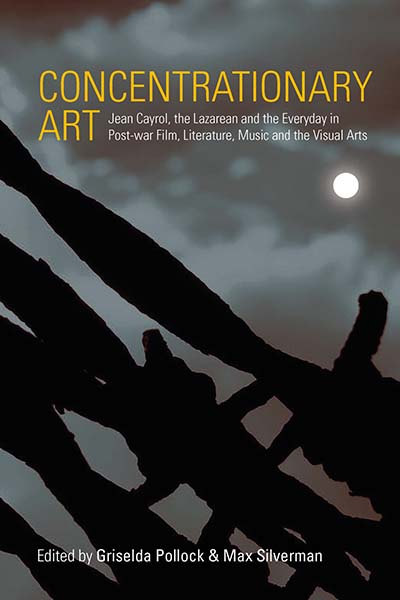
Email Newsletters
Sign up for our email newsletters to get customized updates on new Berghahn publications.
Concentrationary Cinema
Aesthetics as Political Resistance in Alain Resnais's Night and Fog
Edited By Griselda Pollock and Max Silverman
358 pages, 60 illus., bibliog., index
ISBN 978-0-85745-351-8 $135.00/£104.00 / Hb / Published (January 2012)
ISBN 978-1-78238-498-4 $29.95/£23.95 / Pb / Published (March 2014)
eISBN 978-1-83695-750-8 eBook
Winner of the 2012 Kraszna-Krausz Foundation Book Award for Best Moving Image Book
Reviews
“A radical new look at Resnais’s pioneering film about the Nazi Holocaust. Leading experts in French cinema, art history, Holocaust studies and trauma theory confront the film’s racial dimension, clarifying both its historical anchorage and lasting significance. This well-edited volume is an important addition to the scholarship on Resnais.” · Sandra Hebron, Nigel Floyd and Ginette Vincendeau, Best Moving Image Book Award committee
“The anthology comprises essays written by several leading experts on the Holocaust and its cinematic representation, Resnais’ cinema, and trauma theory. They offer a wealth of information displaying often enviable in-depth historical research on the making of the film and its problems with censorship… They also take into account films dealing with the Holocaust that preceded Night and Fog… Some authors in the anthology prefer re-framing Night and Fogthrough the prism of contemporary theories in order to offer sophisticated readings of the film.” · Historical Journal of Film, Radio and Television
“…much of enormous value can be learned from those [contributors] who seek new ways to understand this still elusive, still compelling work [Night and Fog]… these essays are whetstones to sharpen one’s thinking.” · Cineaste
“One should not consider [this volume] simply as yet another book on Night and Fog; we are rather dealing with a series of studies on the theme of memory in film, on the historiography and the multiple links between film and reality…The reader who is looking for reflections and inspirations on memory and film will find substantial elements in the Introduction, which perhaps is the most accomplished part with regard to the theoretical framework. But the volume as a whole suggests a multitude of perspectives that the reader, already familiar with this film, would certainly recognize, hold on to, explore or linger over.” · H-France Review
Description
Since its completion in 1955, Alain Resnais’s Night and Fog (Nuit et Brouillard) has been considered one of the most important films to confront the catastrophe and atrocities of the Nazi era. But was it a film about the Holocaust that failed to recognize the racist genocide? Or was the film not about the Holocaust as we know it today but a political and aesthetic response to what David Rousset, the French political prisoner from Buchenwald, identified on his return in 1945 as the ‘concentrationary universe’ which, now actualized, might release its totalitarian plague any time and anywhere? What kind of memory does the film create to warn us of the continued presence of this concentrationary universe? This international collection re-examines Resnais’s benchmark film in terms of both its political and historical context of representation of the camps and of other instances of the concentrationary in contemporary cinema. Through a range of critical readings, Concentrationary Cinema explores the cinematic aesthetics of political resistance not to the Holocaust as such but to the political novelty of absolute power represented by the concentrationary system and its assault on the human condition.
Griselda Pollock is Professor of Social and Critical Histories of Art and Director of the Centre for Cultural Analysis, Theory and History at the University of Leeds. From 2004–7 she directed a research project on Holocaust Survivors and Migratory Subjectivity. She works on difference, trauma and aesthetics in relation to art, cinema and visual culture in the 20th century. Forthcoming is After-Affect/After- Image: Trauma and Aesthetic Inscription in the Virtual Feminist Museum (Manchester University Press, 2012).
Max Silverman is Professor of Modern French Studies at the University of Leeds. He has written on cultural memory, representations of the Holocaust, post-colonial theory and cultures, and immigration, race and nation in France. He has recently published a book on the connections between the Holocaust and colonialism in the French and Francophone cultural imaginary entitled Palimpsestic Memory: The Holocaust and Colonialism in French and Francophone Fiction and Film (Berghahn, 2013).




